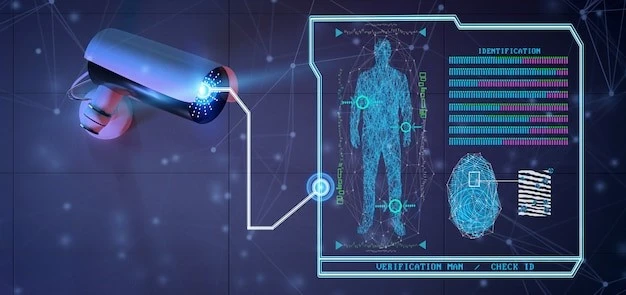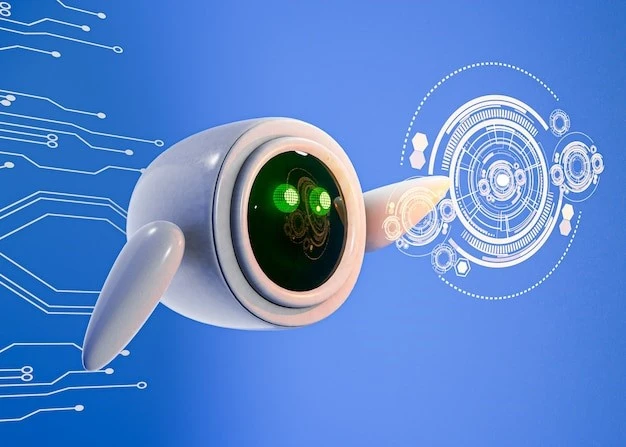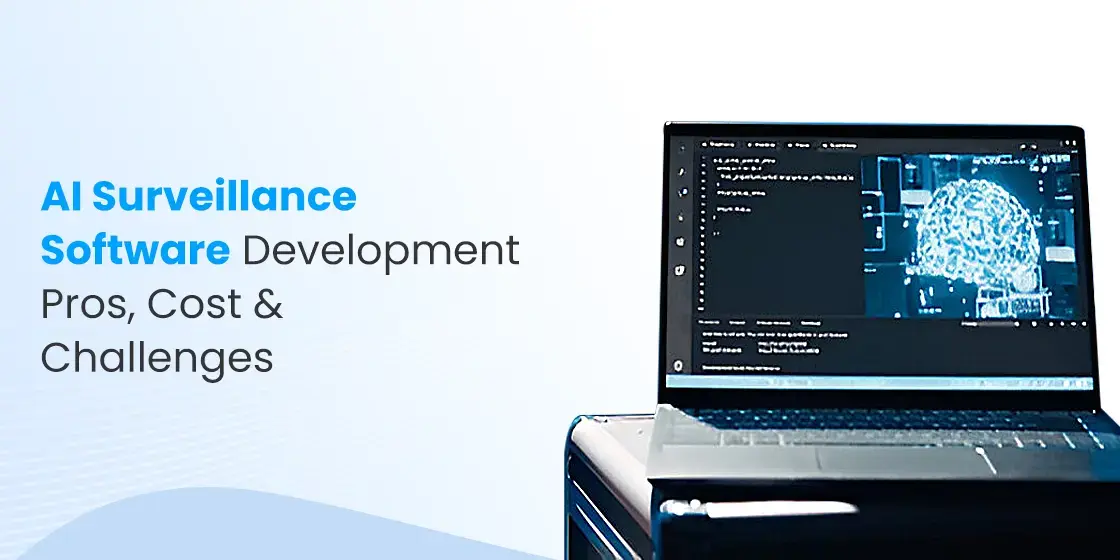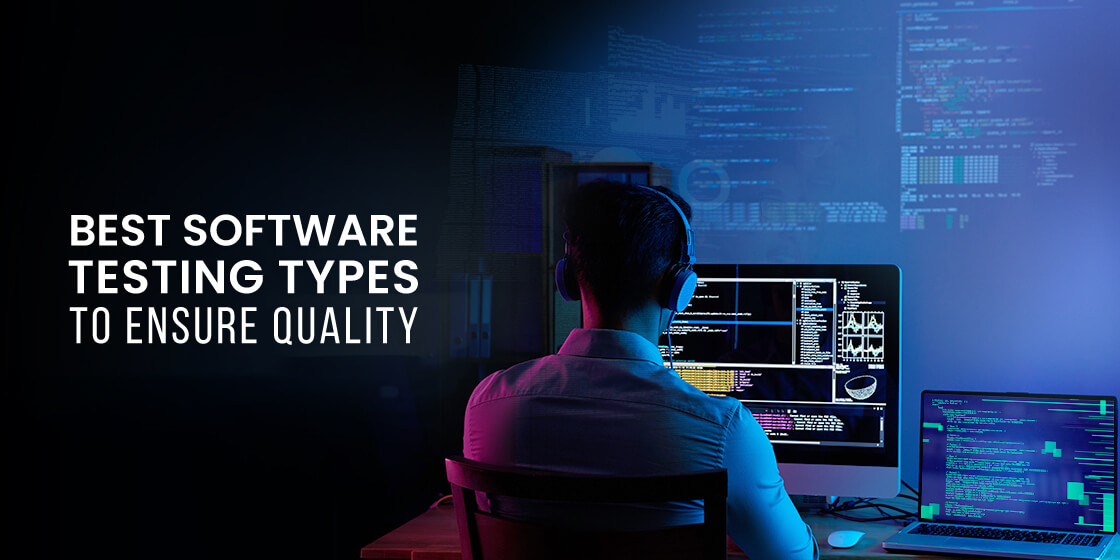Table of Content
Discover What Goes Into Creating an AI Surveillance Software System
Driven by the integration of artificial intelligence (AI), smart surveillance software systems today are no longer a futuristic concept. In fact, they are a rapidly evolving reality, offering enhanced capabilities for monitoring, analysis, and threat detection across various sectors.
These AI surveillance software have moved beyond the limitations of traditional systems, providing real-time insights, automated alerts, and predictive analytics. However, the development and adoption of AI monitoring systems are quite complex with both significant advantages and considerable challenges. Understanding these multifaceted aspects is crucial for businesses and organizations considering leveraging this powerful technology.
In this comprehensive guide, we will dive into the intricacies of AI surveillance system development, exploring its benefits, associated costs, and the significant challenges it faces. We will also highlight the key ways in which the addition of AI by pro enterprise software development services elevates the capabilities of your surveillance software. By getting a balanced perspective on the pros, costs, and challenges, you will get a comprehensive understanding of this transformative technology.
Let’s begin.
What is an AI Surveillance Software System?

An AI surveillance software system represents a significant advancement over traditional video surveillance. It accomplishes that by integrating artificial intelligence algorithms to automate analysis, identify patterns, and generate actionable insights from captured audiovisual data. Unlike conventional systems that rely on manual review of the footage, AI surveillance software employs ML, deep learning, and computer vision techniques to perform intelligent tasks in real-time.
These tasks can range from simple object detection (e.g., vehicles, people, or items), to more complex analyses such as facial recognition, anomaly detection, behavior analysis, and predictive risk assessment.
The intelligence of an AI surveillance system lies in its ability to learn and improve over time with more data. The AI algorithms are trained on huge datasets to recognize specific objects, behaviors, or anomalies. As the system processes more data from the surveillance feeds, its accuracy and reliability in identifying these elements typically increase.
This continuous learning capability allows AI surveillance software to adapt to changing environments, identify subtle patterns that human operators might miss, and provide a more proactive and efficient approach to security and monitoring compared to traditional, passive surveillance systems.
What Does An AI Surveillance Software System Consist Of?
At its core, an enterprise AI surveillance system typically comprises several key components working together in harmony. These include the input sources, such as IP cameras, which capture the raw audiovisual data. This data is then fed into the AI platform, which then processes and analyzes it as per its parameters.
The AI software then identifies relevant events or patterns, and generates alerts or insights for the admin. They are often presented through a user-friendly interface, often including dashboards, video feeds with highlighted events, and customizable reporting tools, for ease of use. The system may also integrate with other security or building management systems, such as access control or alarm systems, to provide a unified security posture.
Fuel innovation by leveraging bespoke software solutions. Get in touch with our team of experts to build cutting-edge software products.
Get a QuoteWhy Does the Addition of AI Benefit Surveillance Software?
The integration of artificial intelligence into surveillance software offers several significant benefits that enhance the capabilities and effectiveness of these systems compared to their traditional counterparts. AI transforms surveillance from a largely passive recording tool into an active, intelligent system capable of autonomous analysis and proactive intervention. Some of the primary benefits of AI surveillance software systems include:
- Enhanced detection and accuracy
- Real-time alerts and automated responses
- Advanced analytics and predictive capabilities
Top Features in a Quality AI Surveillance Software

A quality AI surveillance software system offers a range of advanced features that use AI to provide superior monitoring, analysis, and security capabilities, going beyond simple video recording. Let’s take a look at these features in detail.
Intelligent Object Detection and Classification
It is a fundamental feature, enabling the software to accurately identify and categorize various objects within the surveillance footage, such as people, vehicles (differentiating between cars, trucks, and motorcycles), animals, and specific items of interest. Advanced systems can also track the movement and behavior of these objects in real-time.
This type of AI business process automation reduces the burden on human operators by automatically highlighting relevant objects and filtering out irrelevant visual noise, improving the efficiency of monitoring and investigation. The ability to classify objects further enhances the system’s intelligence, allowing for more specific alerts and analyses based on the type of object detected.
Facial Recognition and Analysis
This is another key feature, allowing the software to identify individuals based on their facial features. High-quality systems offer accurate and reliable facial recognition even in challenging lighting conditions or with partial obstruction.
Beyond simple identification, advanced facial analysis can also include demographic analysis (e.g., age, gender estimation) and emotion detection, although the ethical implications of the latter are significant and require careful consideration. Facial recognition can be used for access control, identifying known threats, or tracking the movement of specific individuals within a monitored area, significantly enhancing security and situational awareness.
Behavior Analysis and Anomaly Detection
AI-powered behavioral analysis represents a significant leap in cybersecurity and surveillance capabilities. This feature enables the AI to learn “normal” patterns of behavior within a monitored environment and automatically detect deviations from these patterns that might indicate suspicious activity, security breaches, or safety hazards. Examples include detecting loitering, unusual movement patterns, falls, or unauthorized access to restricted areas.
By proactively identifying anomalies, the software can alert security personnel to potential issues in real-time, allowing for timely intervention and potentially preventing incidents before they escalate. The ability to learn and adapt to the specific environment being monitored is crucial for the accuracy and effectiveness of anomaly detection.
License Plate Recognition (LPR)
LPR is a specialized feature focused on automatically identifying and recording the license plates of vehicles entering or leaving a monitored area. This is invaluable for law enforcement, traffic management, parking enforcement, and access control applications. High-quality LPR systems can accurately read license plates even at high speeds and in varying weather conditions.
The captured data can be used for tracking vehicle movements, identifying stolen vehicles, or managing access to restricted zones. Integration with databases allows for real-time alerts based on flagged license plates.
Crowd Management and Density Analysis
It features utilize AI to analyze the number of people in a given area and detect overcrowding or unusual crowd behavior. This is crucial for public safety in crowded venues, transportation hubs, and retail environments. The software can provide real-time alerts when pre-defined density thresholds are exceeded, allowing for proactive measures to prevent safety hazards or manage crowd flow effectively. This feature can also be used for optimizing resource allocation based on crowd density patterns.
Integration Capabilities
These are essential for a comprehensive AI surveillance solution. The software should be able to seamlessly integrate with existing security systems (e.g., access control, alarm systems), video management systems (VMS), and other relevant platforms. Open APIs and support for industry standards facilitate this integration, allowing for a unified security management interface and enhanced situational awareness. Integration with cloud platforms can also offer scalability and remote accessibility.
Why Should You Opt for AI Surveillance Software System for Your Business?
Adopting an AI surveillance software system offers numerous compelling advantages for businesses across various industries, despite the often-significant AI development costs, including:
- Enhanced security and reduced risk
- Improved operational efficiency
- Scalability and cost-effectiveness in the long run
- Valuable data and analytics for decision-making
What Challenges Does AI Surveillance Software Adoption Face?

Despite its numerous benefits, the widespread adoption of AI surveillance software faces several significant challenges that need to be addressed carefully.
Ethical Concerns and Privacy Issues
The use of AI in surveillance, particularly technologies like facial recognition and behavior analysis, raises serious ethical questions regarding privacy, bias, and potential misuse. Concerns about mass surveillance, the erosion of privacy rights, and the potential for discriminatory outcomes based on biased algorithms are significant issues that need to be addresses.
High Initial Investment and Ongoing Costs
Developing and implementing a sophisticated AI surveillance system requires substantial upfront investment in hardware and software licenses. They may include AI-enabled cameras, servers, integration with existing systems, and the expertise to deploy and manage the technology. Ongoing costs can include software maintenance and updates, cloud storage fees (if applicable), and the need for skilled personnel to manage and interpret the AI-generated data.
Technical Complexity and Integration Challenges
Implementing AI surveillance software often involves integrating complex algorithms with existing infrastructure, which can be technically challenging. Ensuring seamless interoperability between different components, managing numerous data streams, and maintaining the performance and stability of the AI system require specialized expertise.
Moreover, the accuracy and reliability of AI algorithms are highly dependent on the quality and quantity of training data. The potential for algorithmic bias due to skewed or unrepresentative training data is another technical challenge that needs to be overcome.
Regulatory Uncertainty and Lack of Standardization
The legal and regulatory landscape surrounding AI surveillance is still evolving, with varying laws and interpretations across different jurisdictions, creating uncertainty for businesses looking to adopt it. Moreover, the absence of industry-wide standards for data formats, security protocols, and ethical guidelines can hinder interoperability and increase the complexity of implementation and management.
Potential for Bias and Discrimination
AI models are trained on data, and if that data reflects existing societal biases, the AI system can perpetuate and even amplify those biases in its analysis. This can lead to discriminatory outcomes in areas like facial recognition, where accuracy rates have been shown to vary significantly across different demographic groups.
FAQs
| How is AI used in surveillance? Intelligent AI surveillance software systems use advanced algorithms to autonomously monitor and process audiovisual feeds in real time to find out any anomalies. |
| Is it ethical to use AI for surveillance? While it is slowly being adopted, there are numerous ethical pitfalls when it comes to AI surveillance. However, with significant and robust oversight, a lot of these ethical issues can be overcome. |
| Can AI help law enforcement agencies detect crime before it happens? With the help of techniques and applications like behavioral analysis and facial cue reading, Ai systems can potentially flag prospective criminals and flag them for law enforcement before they commit a crime. |
Conclusion
AI surveillance software development represents a transformative leap in security and operational intelligence, offering significant benefits for businesses. However, the adoption of this powerful technology is not without its challenges.
Ethical concerns surrounding privacy and bias, the high costs associated with development and implementation, technical complexities, and the evolving regulatory landscape all need careful consideration.
Addressing these challenges through responsible development practices, clear ethical guidelines, robust security measures, and a collaborative approach involving technology developers, policymakers, and the public is crucial to unlocking the full potential of AI surveillance while mitigating its risks and ensuring its beneficial and equitable deployment.
Empower your digital initiatives with BariTechSol, a premier custom software development company. Our skilled team tailors cutting-edge solutions to your unique needs. Elevate your tech experience and stay ahead in the digital realm. Partner with BaritechSol and code the success of your next big idea.


